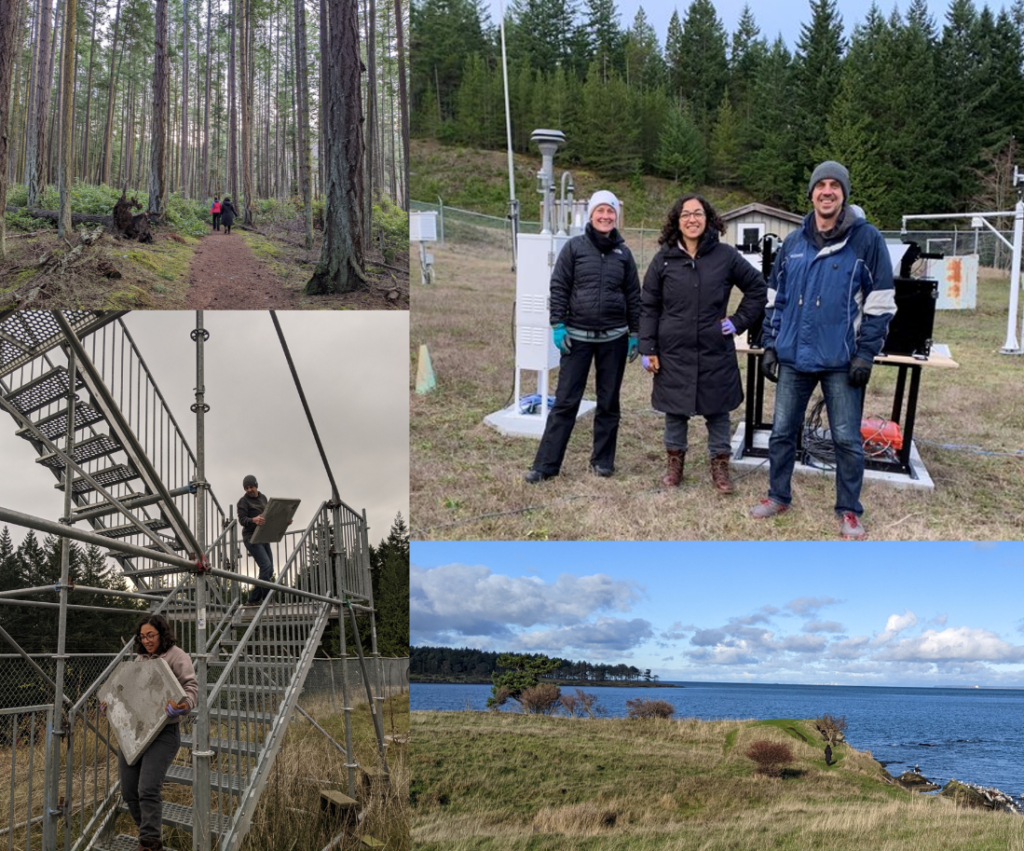In environmental chemistry, field measurements are a critical aspect of connecting laboratory studies with simulations from global chemical transport models. These allow us to test our understanding of pollutant fate and transport under the complex conditions found in the real environment. During the SARS-CoV-2 pandemic, the team in Trevor VandenBoer and Cora Young’s research groups working on the distribution and deposition of atmospheric PFAS into the habitats of Canadian at-risk whales was delayed for 18 months. During this time, team members pivoted to develop new analytical methods to quantify our target analytes, tested and improved on our remote environment sampling equipment capabilities, and performed test deployments at home to hone their fieldwork preparations. In October and December 2021, the team obtained a travel window to set up field sites in Tadoussac, QC and on Saturna Island, BC, navigating flat tires on long weekends and shipping challenges from extreme rain events. With everyone pulling together, the site setups were a success and the team connected with local communities to learn how they are impacted by climate change and declining whale populations that drive local tourism.
Cora Young and Trevor VandenBoer were featured in an article in University Affairs about getting back to fieldwork during the pandemic.

